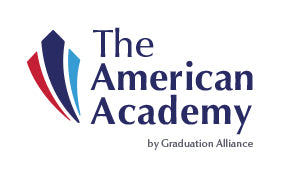Addressing Misconceptions about Online High Schools
Posted on February 09 2013
Online schools are on the rise. More and more, parents are finding the value of helping their child earn their high school diploma through an online school. Based on a recent study* from Ambient Insight, the number of pre-K through Grade 12 students in the United States who receive some form of online instruction will increase to 17 million by the year 2015. According to the same study, virtual school enrolment is expected to increase by over 800% from 2010 to 2015.
Of course, the decision to go to a virtual school depends on the parents, their child and their particular situation and preferences. However, it is best to make the decision by being well-informed. Sometimes parents cross out an online high school due to misconceptions. These should be addressed at the onset so that parents can decide on what truly is best for the child, be it for the child to stay in a “brick and mortar” school, to homeschool or to study in an online high school.
Fiction and Fact: Uncovering Misconceptions of Virtual High Schools
Here are some misconceptions that need to be unraveled for the truth inside:
Misconception #1: Online schools focus only on technology
The Internet and the software provided by The American Academy are just tools to help deliver the lessons effectively. However, reputable online schools are more about content and the curriculum it offers. With The American Academy, which is accredited by the Northwest Accreditation Commission, the quality of the lesson offerings is an important aspect. Of course, it is also important for parents to check whether the school is accredited or not and to also look into the school’s reputation to confirm its ability to provide the level of academic achievement needed.
Misconception #2: Online high school students are chained to their desk and computer
Again, the computer and the Internet are only tools to deliver and process the lessons. It also facilitates communication between the student and the teachers and other online classmates. But students don’t spend their school day in front of the computer. In fact, online students have more freedom to explore other learning avenues. They can work on assignments, perform experiments, visit places of learning such as the museum and the library, go on special learning trips, and take the opportunity to learn from everyday life.
Misconception #3: Students of an online high school don’t have the guidance of a teacher.
With The Academic Academy, your school simply isn’t an “app”. It is taught by teachers who are licensed and eligible. The teachers will be in touch with your child through email and online chat to provide guidance and to also answer any questions the child may have on a lesson. Online teachers are trained on how they can effectively harness the teacher-student relationship, even in a virtual environment.
Misconception #4: Online students don’t really learn much
The myth is that online students have it easier than regular students. However, there are instances when gifted or advanced students opt to enroll in an online school because they want more challenge academically. The American Academy has over 100 online courses ranging from the core subjects (Math, English, Science) to electives. The online high school also has its own stringent requirements when it comes to coursework. An online high school is not a copy-paste affair, either. Plagiarism is an absolute no-no. Students are stimulated to interact with the lesson and provide well thought-out answers, papers and projects.
Misconception #5: Online schooling doesn’t provide the social interaction the child needs
Parents may sometimes worry that their child will become a social misfit because he lacks the opportunity to interact with people, especially with kids his age. However, online high school students do get to interact. Aside from the online interaction they get, they also have time to interact with other students through field trips and regular meet-ups. Parents can also be more proactive in providing these opportunities by involving the child in community activities, clubs and special classes (ballet, karate, etc.). Not only do they get to interact with kids, they also get the same chance to relate with adults from different walks of life.





